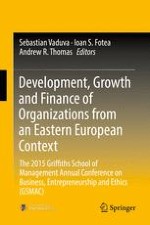2017 | OriginalPaper | Chapter
11. What Are the Main Determinants of the Romanian Shadow Economy? An Empirical Analysis Based on Structural Equation Models
Author : Adriana Anamaria Davidescu, PhD
Published in: Development, Growth and Finance of Organizations from an Eastern European Context
Publisher: Springer International Publishing
Activate our intelligent search to find suitable subject content or patents.
Select sections of text to find matching patents with Artificial Intelligence. powered by
Select sections of text to find additional relevant content using AI-assisted search. powered by
